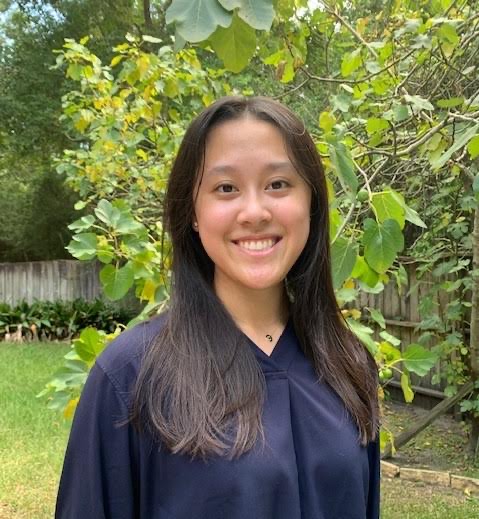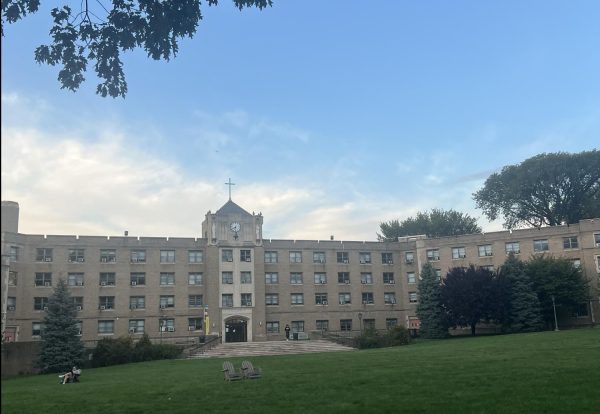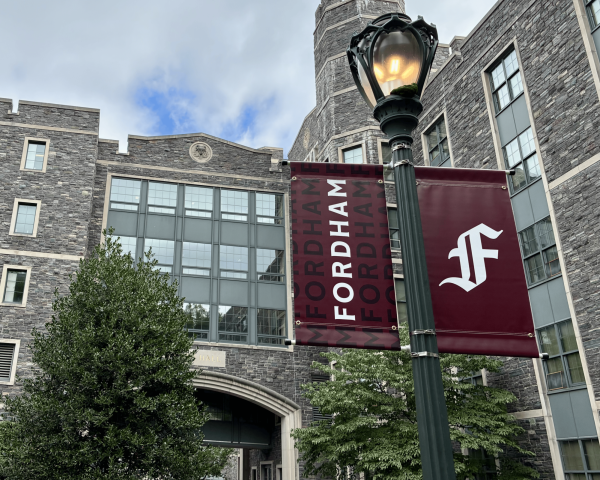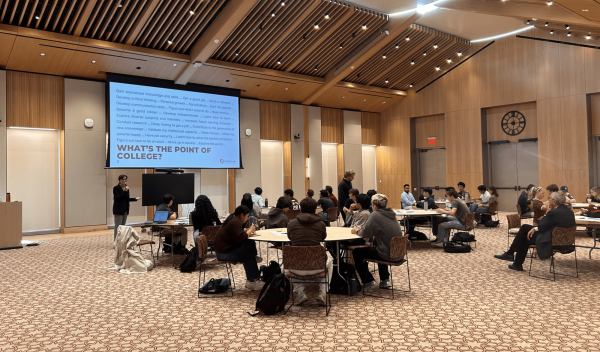Fordham Sophomore Studies Protein-Protein Interactions

Clara Victorio, FCRH ’24, is studying peptides as part of her research at the university. (Courtesy of Clara Victorio for The Fordham Ram)
Researchers at Fordham University have been looking into protein-protein interactions, also known as PPIs, to better understand their relationship with disease.
One of these researchers is Clara Victorio, FCRH ’24. Victorio is studying shorter protein fragments called peptides and their role in protein-protein interactions.
“The overall goal of my research project is to design peptides that undergo controlled conformational switching in order to understand how peptide sequence and structure impact their cell permeability,” Victorio says. “The research is important because previous researchers have found ways to use peptides to target protein-protein interactions, and whenever these protein-protein interactions go wrong, it can lead to serious diseases.”
According to Victorio, existing research shows that peptides can block the disease-causing PPIs. However, peptides must cross the hydrophobic cell membrane in order to inhibit the protein-protein interactions. This knowledge inspired Victorio to research peptides and cell permeability.
“Larger peptides have larger functional groups, and they can bind to their target more specifically, but they also contain larger polar surface areas. Because of this, there’s a trade-off between improving the protein binding versus unfavorable interactions between polar surfaces and the hydrophobic cell membrane interior that can significantly impede peptides’ ability to cross the membrane,” says Victorio.
Last year, Victorio was able to synthesize, cleave and purify a model peptide that she identified from the literature she had read. From this, she evaluated a solution-phase method to form the cross-links in the peptides. She is currently working on alternate strategies to form disulfide bonds in the peptides.
Victorio says that the unsolved question is how to deliver these polar peptides across the hydrophobic cell membrane to their target PPIs inside the cell. Some natural peptides accomplish this by switching shapes or conformations as they pass through the membrane.
So far, Victorio has successfully chemically synthesized peptides and performed reactions. Now, she is working on a technique called mass spectrometry which she will use to determine which products form in these reactions. From there, she plans to cleave and purify the peptides, allowing her to evaluate the structure and determine if the disulfide bond successfully formed. This will also allow her to see if the peptide was able to switch to an alternate conformation or shape.
Victorio originally got involved in protein-protein interaction research after attending a research symposium hosted by the Fordham chemistry department in 2021. Fordham chemistry Professor Nicholas Sawyer, Ph.D., spoke about his protein-protein interaction research, and Victorio reached out to see how she could get involved. Other students in Sawyer’s research lab are working on different projects related to PPIs, but Victorio chose to focus on peptides and cell permeability because published research on the subject had caught her interest.
Victorio plans to continue her research this summer by incorporating a second crosslink to stabilize the peptide in a different shape and re-evaluate the structure. The future of her research depends on what she learns. The long-term goal is to compare the permeability of the same peptide when it adopts two different shapes.
“By gaining a greater understanding of the underlying relationship between peptide sequence, structure and cell permeability, hopefully, we will be able to guide future research and therapeutic applications of peptide-based PPI inhibitors,” says Victorio.













































































































































































































